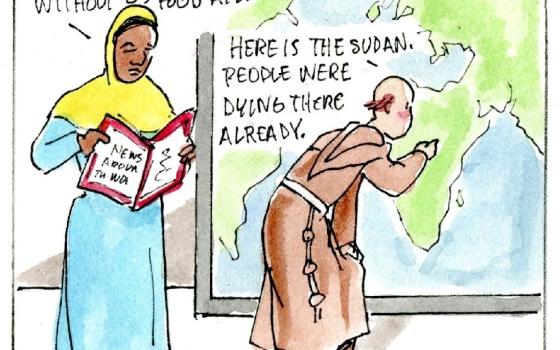
Water surrounds the coast of Cabo da Roca near Lisbon, Portugal, Friday, April 14, 2023. (AP Photo/Michael Probst)
Charred, drained or swamped, built up, dug out or taken apart, blue or green or turned to dust: this is the Earth as seen from above.
As the world commemorated Earth Day on Saturday, the footprints of human activity were visible across the planet’s surface. The relationship between people and the natural world will have consequences for years to come.
In Iraq, lakes shrivel and dry up as rain fails to fall, weather patterns altered by human-made climate change. In Florida, the opposite problem: too much water clogs roads and neighborhoods, trapping cars and stranding people, with the burning of fossil fuels again partially to blame for erratic conditions.
In megacities, like the rapidly growing Kuala Lumpur in Malaysia, skyscrapers shoot upwards while in Guyana excavators dig deep into the earth for deposits of gold.
In California, surfers straddle waves in the ocean. In New Jersey, solar panels float in ponds, and in India, fishing nets sink into the lakes. Residents of neighborhoods in Utah meanwhile, find water where it shouldn’t be — coursing through their streets and homes.
Advertisement
On land, farmers are at the whims of the weather, with patterns being altered by climate change. In Argentina, parched lands turn crops to gray. Just outside Barcelona, new cracked, thirsty water beds appear after months of little to no rain.
Earth Day first began in 1970, heralded as the birth of an environmental movement that encouraged people worldwide to protect the natural world. Today, it also urges action to combat climate change, which has accelerated in recent decades.
Each year, scientists have warned that the burning of fossil fuels is heating the planet and bringing us closer to breaching internationally agreed upon limits of warming, which would have major effects, such as more extreme weather events.
Around the world, activists of all ages are keeping the pressure on governments and companies to do more to protect the environment and combat climate change.


















